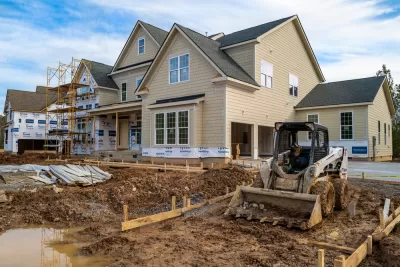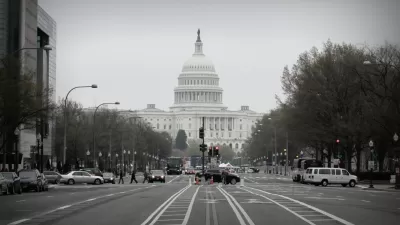Prohibiting single-family zoning alone won’t accomplish the needed transformation of the built environment in the United States.

A “spotlight on zoning practice” published this week by the American Planning Association (APA) goes into detail on some of the considerations in zoning codes other than land use that can contribute to housing equity. The “spotlight” provides insight into a longer piece written by John Zeanah for the May 2022 issue of Zoning Practice.
“Proposals to eliminate zoning districts that permit only single-family homes have dominated zoning reform discussions for the past five years. But focusing narrowly on getting rid of, so called, single-family-only zoning is unlikely to dramatically increase the supply of housing in most communities,” begins the post.
So what other zoning considerations can support missing middle housing and housing equity, according to Zeanah? The article lists two: 1) rightsizing bulk standards and 2) revisiting building codes.
On the first recommendation, Zeanah cites a 1991 report, “Not in My Backyard,” prepared by the Advisory Commission on Regulatory Barriers to Affordable Housing and presented to then Secretary of Housing and Urban Development Jack Kemp.
“Zeanah suggests planners should evaluate opportunities to relax bulk standards that make it difficult to fit multiple residences on a lot as well as those that require larger lots than the market would otherwise provide. These include standards that stipulate a minimum lot size or lot area per dwelling unit and those that establish a maximum building height.”
FULL STORY: Going Beyond "Use" Zoning to Promote Housing Equity

Montreal Mall to Become 6,000 Housing Units
Place Versailles will be transformed into a mixed-use complex over the next 25 years.

Planetizen Federal Action Tracker
A weekly monitor of how Trump’s orders and actions are impacting planners and planning in America.

DARTSpace Platform Streamlines Dallas TOD Application Process
The Dallas transit agency hopes a shorter permitting timeline will boost transit-oriented development around rail stations.

Without International Immigrants, the Rural US Population Would Be Falling 58%
Census data shows that population growth in rural areas is due in large part to international migrants.

Dead End: Nine Highways Ready for Retirement
The Freeways Without Futures report describes the nation’s most promising highway removal proposals.

Congressman Proposes Bill to Rename DC Metro “Trump Train”
The Make Autorail Great Again Act would withhold federal funding to the system until the Washington Metropolitan Area Transit Authority (WMATA), rebrands as the Washington Metropolitan Authority for Greater Access (WMAGA).
Urban Design for Planners 1: Software Tools
This six-course series explores essential urban design concepts using open source software and equips planners with the tools they need to participate fully in the urban design process.
Planning for Universal Design
Learn the tools for implementing Universal Design in planning regulations.
City of Mt Shasta
City of Camden Redevelopment Agency
City of Astoria
Transportation Research & Education Center (TREC) at Portland State University
City of Camden Redevelopment Agency
Municipality of Princeton (NJ)
Regional Transportation Commission of Southern Nevada





























